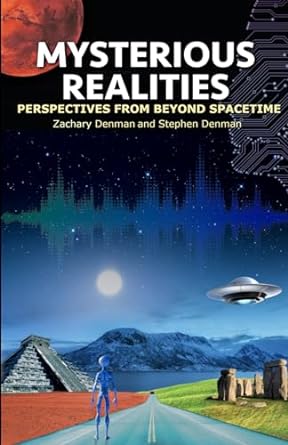The populations of Tartarian established a foundational civilisation as the survivors and descendants of Hyperborea and Scythia, from the 15th August 342 BC.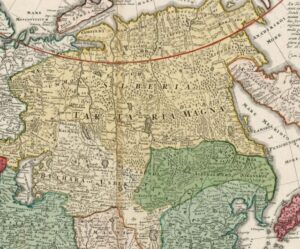 Then from the 16th February 458 BC, the political basis of Great Tartaria was founded. On the 4th October 1586, the civilisation of Tartaria (Tartary), which means ‘Strong Place’ or Tartaria Magna (Great Tartary), that was defined as the ‘Great Strong Place’, was politically and scientifically established. Numerous areas of Great Tartaria were highly developed, and hence, the ornately constructed towns and cities, which sparkled in the daylight and then brightly shone in the nighttime. The fascinating landmass of Great Tartaria in Northern Russia, was recognised around Planet Earth as the mystical environment from where the supreme kinds of spiritual and musical knowledge were derived. Such communal discernment was practiced across the Tungusie Region and Koraki Region of Central Tartaria, where many urban settlements which displayed magnificent architectural designs that geometrically enhanced, shaped and directed the vibrational resonances which had become intricate nodal cymatic patterns of harmonic bliss and peace for the 12 feet tall Tatarskiye Velikany (Mighty Giants) and the Nordic Tartarians or the Tartarian Aryans.
Then from the 16th February 458 BC, the political basis of Great Tartaria was founded. On the 4th October 1586, the civilisation of Tartaria (Tartary), which means ‘Strong Place’ or Tartaria Magna (Great Tartary), that was defined as the ‘Great Strong Place’, was politically and scientifically established. Numerous areas of Great Tartaria were highly developed, and hence, the ornately constructed towns and cities, which sparkled in the daylight and then brightly shone in the nighttime. The fascinating landmass of Great Tartaria in Northern Russia, was recognised around Planet Earth as the mystical environment from where the supreme kinds of spiritual and musical knowledge were derived. Such communal discernment was practiced across the Tungusie Region and Koraki Region of Central Tartaria, where many urban settlements which displayed magnificent architectural designs that geometrically enhanced, shaped and directed the vibrational resonances which had become intricate nodal cymatic patterns of harmonic bliss and peace for the 12 feet tall Tatarskiye Velikany (Mighty Giants) and the Nordic Tartarians or the Tartarian Aryans.
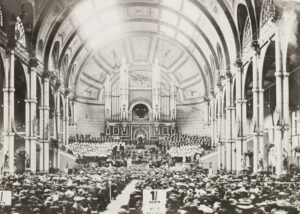 The infants of Great Tartaria were trained in large choirs, to produce intensely resonant choral and singing tones, with overtone patterns that could then reintegrate the genetics and cells of their own bodies, and minds. Additionally, the communities of Tartarian Aryans were able to enhance their own levels of self-awareness and spiritual development by using harmonic choral singing and orchestral melodies which the infants of Great Tartaria composed alongside their fathers and mothers. Further to this, various kinds of choral toning apparently stimulated the vagus nerve, which is an element of the Autonomic Nervous System, and therefore, many of the Tartarian Aryans used singing and chanting to relax themselves.
The infants of Great Tartaria were trained in large choirs, to produce intensely resonant choral and singing tones, with overtone patterns that could then reintegrate the genetics and cells of their own bodies, and minds. Additionally, the communities of Tartarian Aryans were able to enhance their own levels of self-awareness and spiritual development by using harmonic choral singing and orchestral melodies which the infants of Great Tartaria composed alongside their fathers and mothers. Further to this, various kinds of choral toning apparently stimulated the vagus nerve, which is an element of the Autonomic Nervous System, and therefore, many of the Tartarian Aryans used singing and chanting to relax themselves.
Click to Watch Electric Generators Of Tartaria
Much of the choral singing and orchestral melodies were equivalently combined with specific photonic wavelengths from chromatically varied crystal glass windows in the cymatic temples of Great Tartaria. Each of the chromatic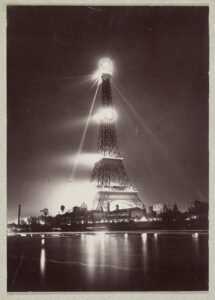 looking crystal glass windows had metal frames that were comprised of precisely layered gold, aluminium, silver and copper banding. The crystal glass windows of the cymatic temples also used refined macrocrystalline crystal substances that included Diafanite (Clear Quartz), Amethyst (Purple Quartz), Galazine (Blue Quartz), Kokinite (Red Quartz or Ruby), Citrine (Yellow Quartz), Galaktodite (Milky Quartz), Rozine (Pink Quartz), and Prasiolite (Green Quartz). Every single window displayed multi-coloured geometric patterns which projected luminescent shapes onto the walls and floors of the cymatic temples.
looking crystal glass windows had metal frames that were comprised of precisely layered gold, aluminium, silver and copper banding. The crystal glass windows of the cymatic temples also used refined macrocrystalline crystal substances that included Diafanite (Clear Quartz), Amethyst (Purple Quartz), Galazine (Blue Quartz), Kokinite (Red Quartz or Ruby), Citrine (Yellow Quartz), Galaktodite (Milky Quartz), Rozine (Pink Quartz), and Prasiolite (Green Quartz). Every single window displayed multi-coloured geometric patterns which projected luminescent shapes onto the walls and floors of the cymatic temples.
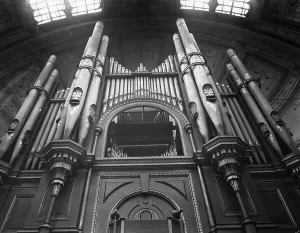 The integration of music in the daily lifestyles of the Tartarian, was perceived to be of the upmost importance. Hence, the communities of Nordic Tartarians would educate their families, when it came to musical terminology, in the designated Svetlyi Khramy (Light Shrines) and Bozhestvo Khramy (Deity Shrines), about the concept of modes, that are a kind of scale which is created by starting another scale from a note other than its root. With this, the Tartarians used semitones or the smallest intervals in a chromatic scale, melodies or sequences of notes that were played by Tartarian one after the other to produce incredible tunes. Entire communities of Tartarians would hold conversations about sound healing techniques and musical composition. Wherefore, the usage of harmonic intervals or notes of different pitches that are played together simultaneously.
The integration of music in the daily lifestyles of the Tartarian, was perceived to be of the upmost importance. Hence, the communities of Nordic Tartarians would educate their families, when it came to musical terminology, in the designated Svetlyi Khramy (Light Shrines) and Bozhestvo Khramy (Deity Shrines), about the concept of modes, that are a kind of scale which is created by starting another scale from a note other than its root. With this, the Tartarians used semitones or the smallest intervals in a chromatic scale, melodies or sequences of notes that were played by Tartarian one after the other to produce incredible tunes. Entire communities of Tartarians would hold conversations about sound healing techniques and musical composition. Wherefore, the usage of harmonic intervals or notes of different pitches that are played together simultaneously.



